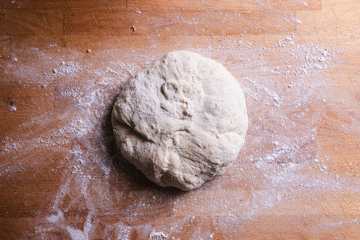Loaves in the Time of Quarantine: Sourdough Sandwich Bread
Story, Recipes and Photos by Andrew Janjigian
Like countless others over the past year, I’ve been spending loads of time in my kitchen baking sourdough bread. Most of us “lockdown” bakers turned—or returned—to sourdough baking in search of distraction, joy or solace during a time of uncertainty and turmoil. In my case, the practice was all that, as well as something more: a new vocation.
Almost by accident, within a few weeks after having been booted from the office to continue recipe testing at home, I found myself at the forefront of a mini-movement, online teaching thousands of people—many of them new to sourdough baking—how to create a sourdough starter from scratch. All because I posed a question to myself that needed an answer: Could you create a sourdough starter using only tiny amounts of flour?
Here’s how it went down. Back in March 2020, on the second or third day of COVID lockdown, my then-colleagues at Cook’s Illustrated magazine and I were in a Zoom staff meeting, discussing the progress of our respective recipe-testing projects. One of them was about to begin working on a dinner roll recipe, and she mentioned having a hard time finding both flour and yeast at her local supermarket. (This was just before all of us learned the true meaning of “supply-chain shortages.”)
As the team’s resident bread head, I quipped that we should make the recipe sourdough rather than yeasted, since that would at least eliminate the need for one scarce ingredient. But then I remembered that the average from-scratch sourdough starter recipe—including the one I’d developed for the magazine itself—churns through a few pounds of flour start to finish, since you typically “feed” the developing culture once or twice a day with a cup or so of fresh flour. It occurred to me that—bread baking being mostly a game of ratios—one ought to be able to do the same thing on a micro scale, in order to conserve flour for where it was most important: the loaves themselves.
When the meeting ended, I put the idea to the test by combining 10 grams (about a tablespoon) of flour and 10 grams of water in a mini Mason jar, sealed it and set it somewhere warm to ferment. Within a day, the mixture was bubbly and fragrant, just as I’d hoped. I brought the jar to the next staff Zoom meeting for show and tell, but no one else seemed all that impressed.
Undeterred, I shared the results on my Instagram feed, with a brief description of what I’d done and why, along with a pithy, catchy name and hashtag: the #quarantinystarter. Later that day my post got reposted to the Cook’s Illustrated feed itself, and that’s when the experiment really came alive. Within a day, other people began posting images of their own just-hatched tiny starters. After about a week, there were several hundred people participating in the Quarantiny starter “project”; within a month, at least a thousand. After that, I lost count.
People soon began naming their tiny starters. Some of my favorites include The Yeastie Boys, Courtney Loave, Quarantiny Dancer, Quarantiny Turner, Quentin Quarantino, Vincent Vandough, Holly Doughlightly, Otis Breading, Angelina Doughlie, Jar Jar Stinks, Adam Levain, Clint Yeastwood, Carrie Breadshaw and Bread Astaire. And the list goes on.
Within a few weeks, the real test arrived. A sourdough starter, tiny or otherwise, isn’t all that useful unless it can leaven a loaf of bread. Once these tiny starters reached “maturity”—meaning that they about tripled in volume within 12 hours of feeding them with fresh flour—people began baking with them, myself included. The experiment worked! Pictures of beautiful rustic loaves began pouring in from all over the world, using recipes of their own or those that I sent out on the email newsletter I launched as a resource for information and a community hub for people participating in the project.
And thanks to Quarantinystarter Project and the enthusiastic response it received, that newsletter has become a full-time gig for me. Now that most of my subscribers already have a sourdough starter to use, I’ve moved on from teaching people how to start a starter to teaching them to bake bread of all kinds, sourdough and otherwise. Meanwhile, many of those who began their own sourdough adventures with me back in March are still baking bread regularly.
One of the recipes I shared is a no-knead sourdough boule I call “The Loaf,” since it is simple to make and can easily serve as the template for countless variations. Variations like the three porridge sandwich breads here, which combine sourdough with one of my other favorite bread-baking approaches: cooked starches. Adding a porridge to a bread dough allows you to sneak “extra” water into the bread without the dough becoming too wet to handle. And extra water makes for a super moist, plush-textured loaf—perfect for sandwiches—and one that stays fresh far longer than most homemade breads.
Shaping a pan loaf
(By the way, if you don’t have a sourdough starter to use in these recipes yet, and don’t want to start one from scratch, ask around; someone you know probably does. And if you don’t find one, I can always mail you a dried version of mine, just contact me directly at wordloaf.substack.com.)





